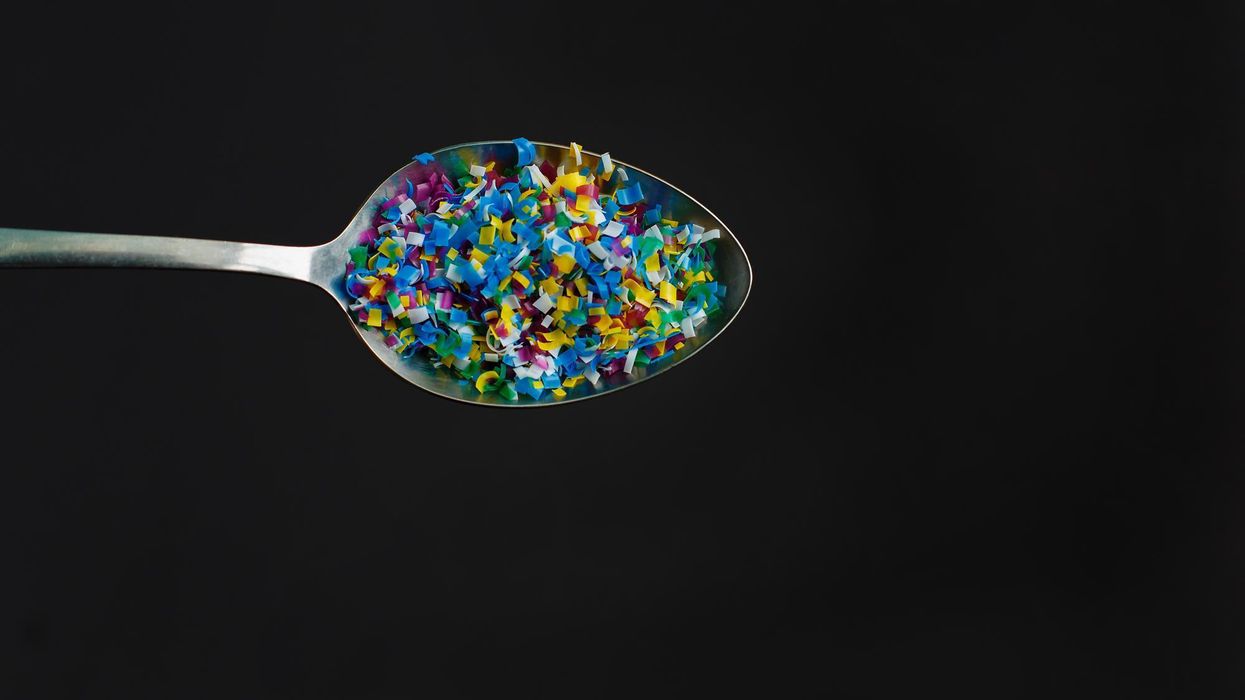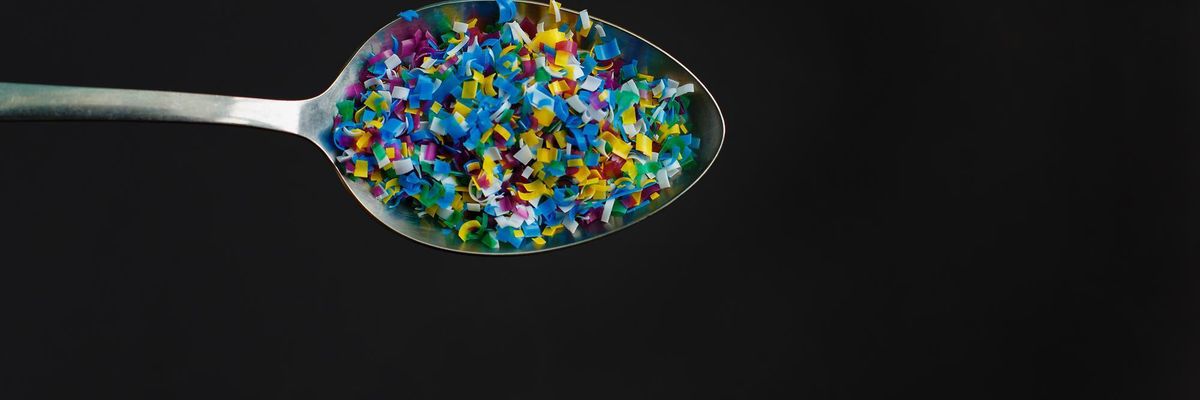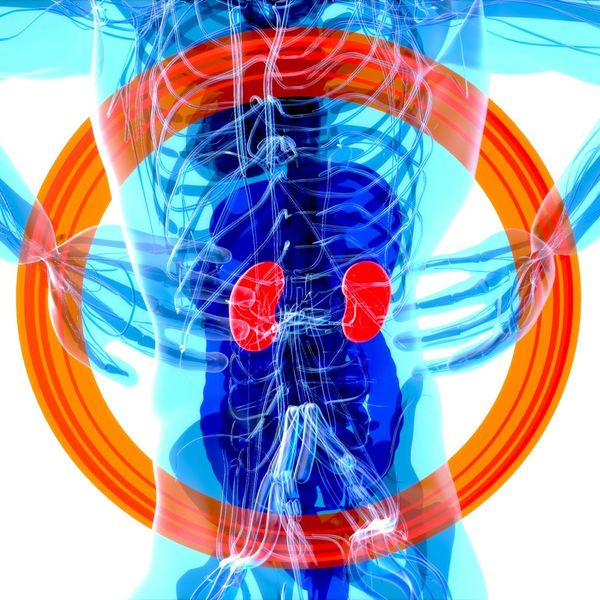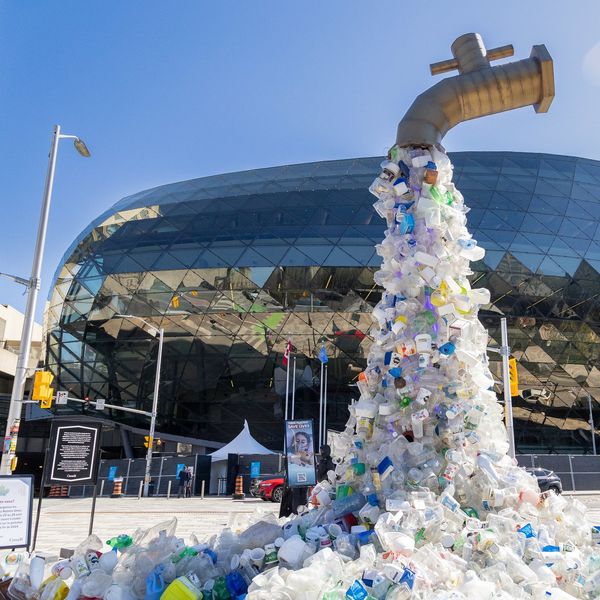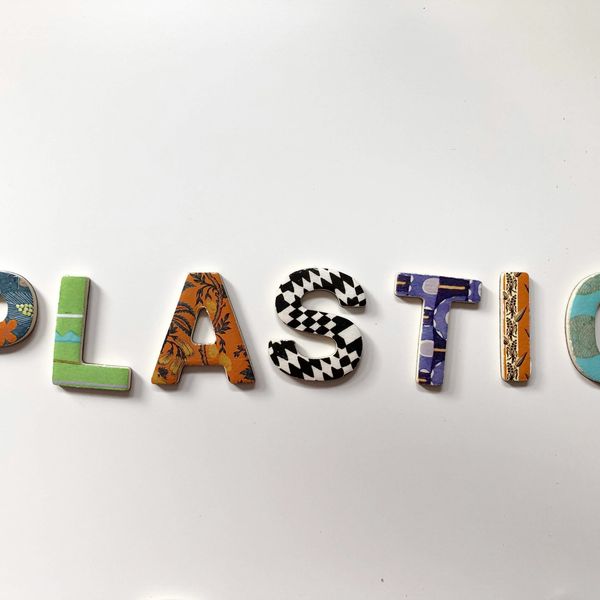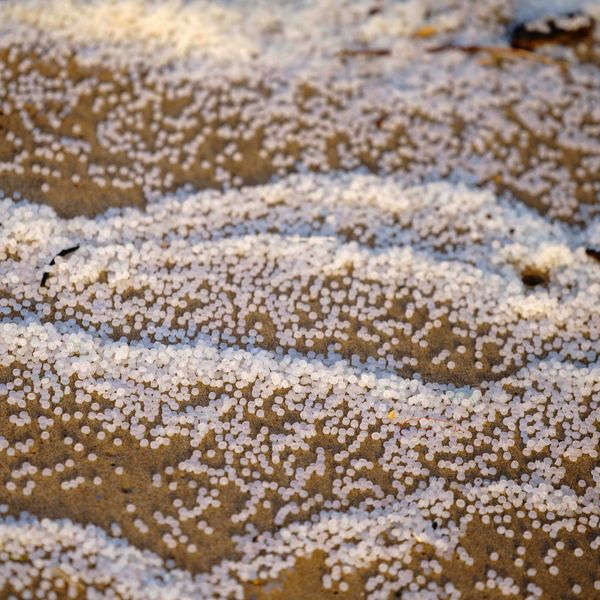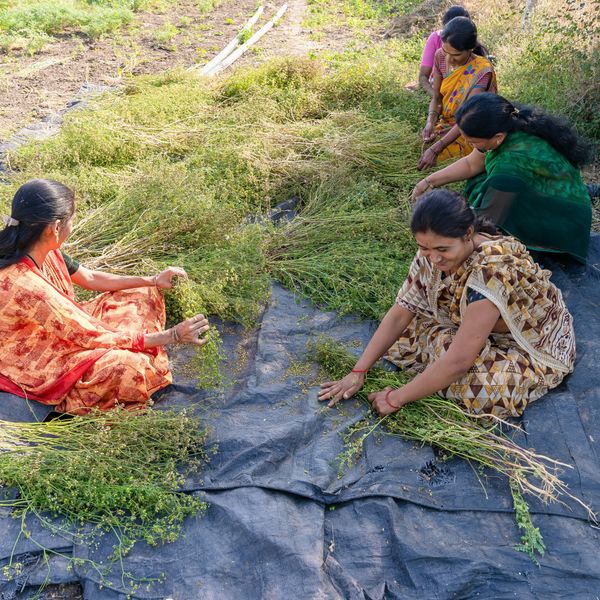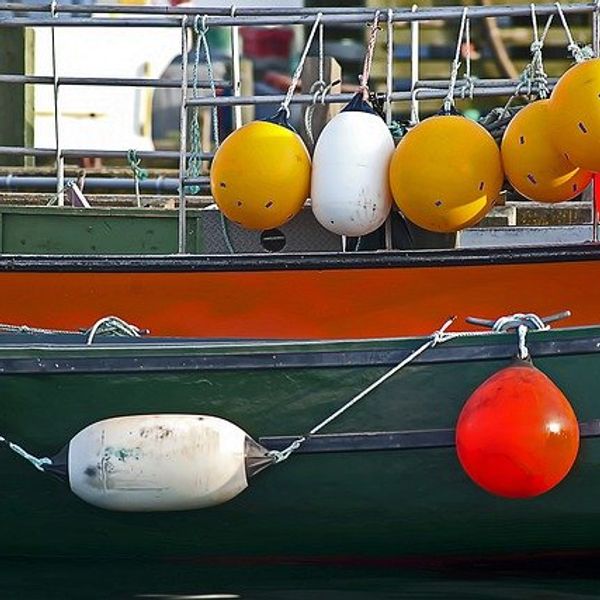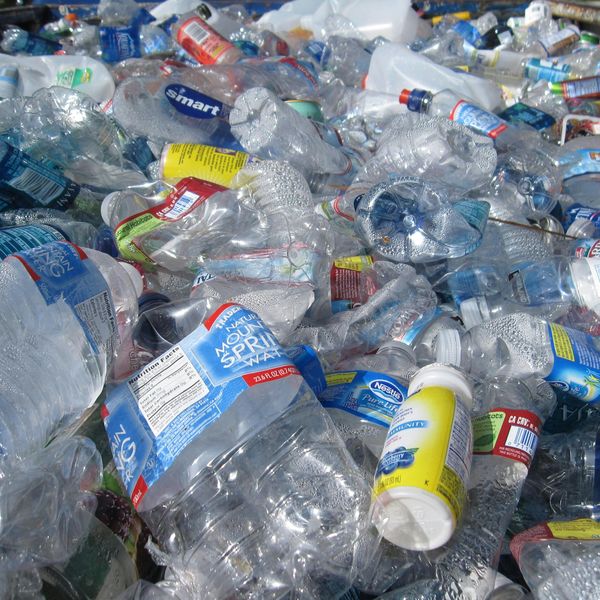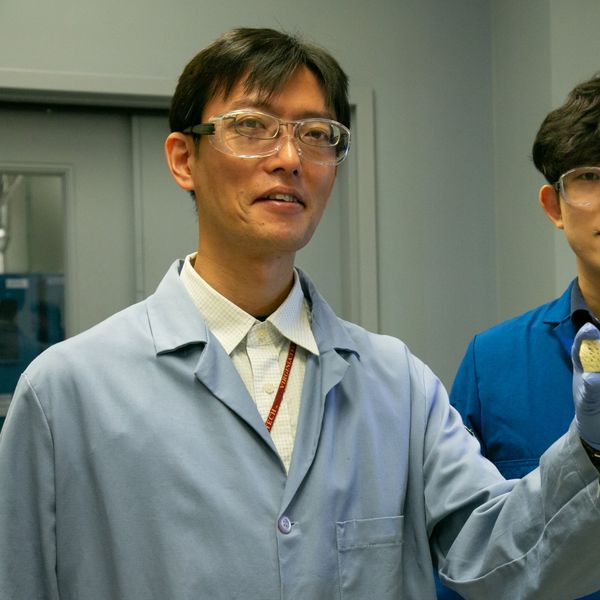Mary Beth Kirkham hadn't studied microplastics when she was invited to co-edit a new book about microplastics in the environment—but something stood out to her about the existing research.
"I had read in the literature that...cadmium and other toxic trace elements [are] increased when we have these particulate plastics in the soil. So, that was of concern to me," Kirkham, a plant physiologist and distinguished professor of agronomy at Kansas State University, told EHN.
Kirkham's expertise is in water and plant relations and heavy metal uptake, so she decided to conduct her own research in which she cultivated wheat plants exposed to microplastics, cadmium, and both microplastics and cadmium. Then she compared these plants to those grown without either additive. She chose cadmium because it's poisonous, carcinogenic, and ubiquitous in the environment due to human activity—it's shed from batteries and car tires, and is naturally found in the phosphate rock used to make agricultural fertilizers.
"Cadmium is everywhere," said Kirkham.
At the end of the experiment she sent her wheat plants off for analysis, and, validating previous reports, the plants grown with microplastics were more cadmium-contaminated. "The plastics really were acting as the vector for uptake of the cadmium," she said.
Her experiment became a chapter in the new book, Particulate Plastics in Terrestrial and Aquatic Environments.
"I think people just haven't felt that microplastic uptake by plants is an issue," said Kirkham. "It just hasn't been in the public eye."
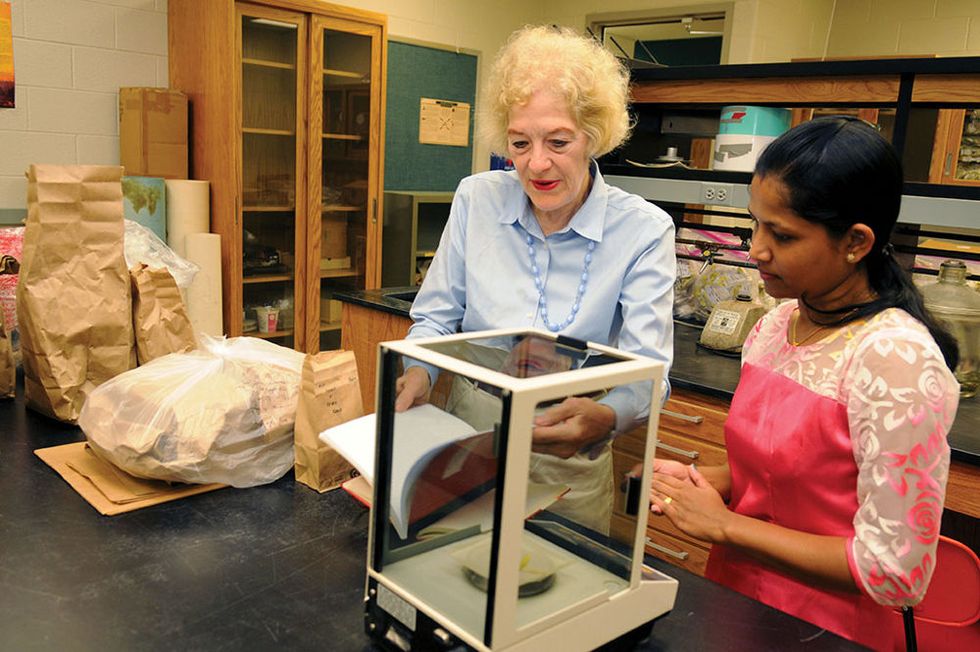
Mary Beth Kirkham (left) in her lab at Kansas State University. (Credit: k-state.edu)
Microplastics, loosely defined as plastic pieces smaller than 5 millimeters across, or roughly the size of a small grain of rice, have made their mark on both the global ecosystem and the popular consciousness, famously killing seabirds and raining down on wilderness areas. And while the impacts of ocean microplastics have been the subject of significant media and scientific attention, researchers say that most microplastics are actually accumulating on land, including agricultural areas. One estimate suggested that 107,000 to 730,000 tons of microplastics could be dumped onto agricultural soils in the U.S. and Europe every year, compared to the 93,000 to 236,000 tons that enter the oceans.
Microplastics arrive on farms through processed sewage sludge used for fertilizer, plastic mulches, and are even intentionally added as slow-release fertilizers and protective seed coatings. In just the last few years, an uptick in research has uncovered alarming potential impacts of this contamination on all aspects of agricultural systems from soil quality to human health.
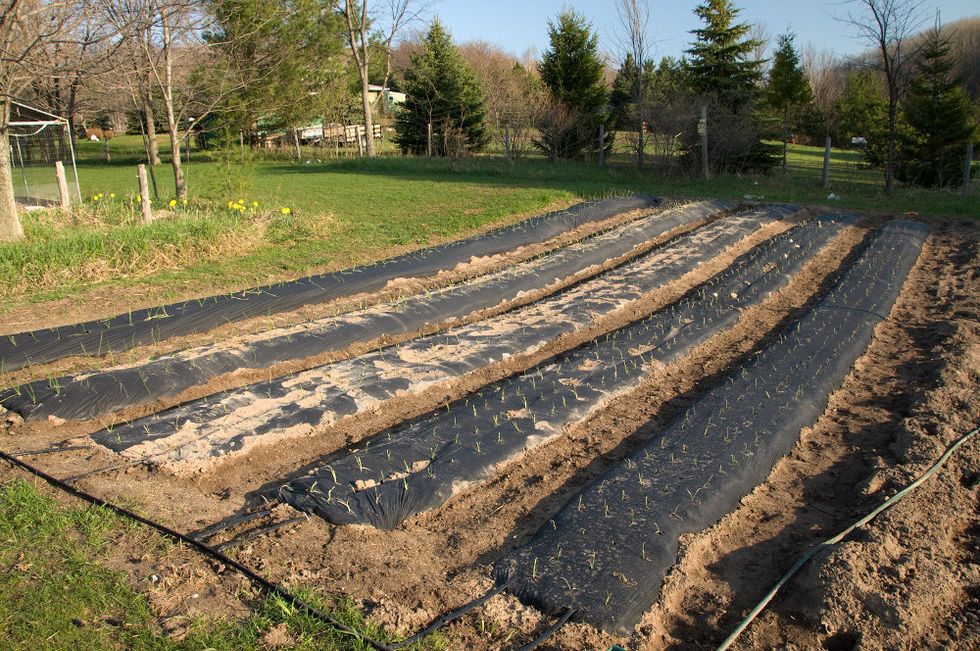
Microplastics can also enter agricultural soils through the degradation of plastic materials used by farmers, such as black plastic mulch. (Credit: Charles Dawley/flickr)
Sewage sludge, mulch, and slow-release fertilizers
Luca Nizzetto, a research scientist at the Norwegian Institute for Water Research, began studying microplastics in agricultural soils after he noticed that most research on microplastics focused on oceans.
"Most of the marine sources are actually land-based," Nizzetto told EHN. "No one was looking at what was happening close to the source." When his team began evaluating potential land sinks for microplastics they "immediately [identified] agriculture as one of the hot areas."
Microplastics can enter agricultural lands via sewage sludge, the solids that are filtered out of wastewater, which are commonly used to fertilize agricultural fields. Microplastics get into the wastewater originally through laundry, personal care products, and urban runoff.
Nizzetto said that most of the microplastics are retained in the sludge as the water is cleaned in treatment facilities and, in a 2016 paper, his team estimated that between 125 and 850 tons per million people are annually dumped on European agricultural lands via sewage sludge. Nizzetto also reported in the same paper that roughly 50 percent of sewage sludge is processed for agricultural application in both Europe and the United States.
Microplastics have been reported in U.S. sewage sludge as early as 1998, and in 2020 researchers estimated roughly 21,249 metric tons of microplastics are released to U.S. agricultural lands from sewage sludge annually. Because of their recalcitrance in soils, U.S. researchers have even investigated the possibility of using the contemporary microplastics profile of soils as an indicator of past sewage sludge application.
Microplastics can also enter agricultural soils through the degradation of plastic materials used by farmers. Kirkham said that in the 1950s, plastic covering replaced glass in greenhouses. Plastic mulches were also popularized, becoming commonplace across much of the world. These mulches, sheets of plastic laid out on the ground to suppress weeds, warm the soil, and retain moisture, are challenging to recycle and costly to dispose of.
According to Kirkham, farmers may end up piling them up on their land or burning them to avoid disposal costs. Nizzetto said that in some areas, the mulches are simply left to break down into the soil.
Intentionally manufactured microplastics are another source of microplastic emissions to agricultural soils, according to Nizzetto and other researchers that EHN spoke with. These can include plastic encapsulated slow-release fertilizers and plastic coatings intended to protect seeds from microorganisms.
A 2017 report compiled for the European Commission estimates that up to 8,000 metric tons of plastic from slow-release fertilizers are broadcast onto Western European agricultural soils annually (although they said that a percentage of this may not be microplastics). A 2019 European Chemicals Agency report listed emission amounts as 10,000 metric tons for slow-release fertilizers, and 500 metric tons for treated seeds every year. Figures for the U.S. were not available.

Microplastics can arrive on farms through processed sewage sludge used for fertilizer. (Credit: CityofGeneva/flickr)
Microplastics alter the physical and biological properties of soils
Sixteen days into Kirkham's microplastics and cadmium experiment, her plastic-treated wheat plants began to yellow and wilt. Water had been pooling on the top of the soil in the plastic treated plants, but to keep her experiment consistent, she had to give all the plants the same amount of water.
"The particulate plastic appeared to clog the soil pores, prevent aeration of the soil, and cause…the roots to die," said Kirkham. Plants without microplastics, even the cadmium-contaminated ones, were in much better shape. "It was the plastics that were controlling the growth more than the cadmium."
Another team of researchers reported similar results. They found that exposure to plastics resulted in reduced weight, height, chlorophyll content, and root growth of Arabidopsis thaliana, a relative of cabbage and broccoli. In this study, the researchers used nanoplastics, which are plastic pieces that are less than 100 nanometers in size. For scale, the novel coronavirus measures 60 to 140 nanometers.
The full impact of microplastics contamination in agricultural soils, particularly as concentrations increase with time, is unknown. However, studies have shown that microplastics possess physical and chemical characteristics that have the potential to alter soil bulk density, microbial communities, water holding capacity, and other properties that influence plant development.
How do microplastics impact earthworms?
Esperanza Huerta Lwanga, a soil scientist affiliated with both Wageningen University & Research in the Netherlands and El Colegio de la Frontera Sur in Mexico, has investigated the effects of microplastics on earthworms, creatures widely considered a boon to farming because of their ability to aid decomposition, add organic nutrients to the soil through their waste castings, and increase the aeration of soil.
"When I was doing research on soil invertebrates' distribution at different home gardens in Tabasco, Mexico, I found microplastics. And in those soils with microplastics, there were not earthworms," Huerta Lwanga told EHN.
This observation motivated her to study earthworms directly. In her subsequent experiments, she found that worms attempted to avoid microplastics, but when the soil concentration reached 7 percent, they began to ingest them along with the soil, concentrating the plastics in their castings, and transporting them through different layers of soil. In their 2018 paper, Huerta Lwanga's team cautioned that rainwater flows through earthworm burrows into groundwater, creating a clear conduit for microplastics to enter groundwater systems.
Huerta Lwanga also said that microplastics caused an 8 percent to 25 percent mortality rate in earthworms depending on the dose. In their paper, she and her colleagues hypothesized that mortality may be partly caused by microplastics abrading the digestive tracts of earthworms, making it more difficult for them to absorb nutrients. Damage to the digestive tracts of earthworms that ingested microplastics has been documented by other researchers.
Once microplastics enter an ecosystem, they can proliferate through trophic levels, such as when a bird eats an earthworm.
Or when a person eats an apple.
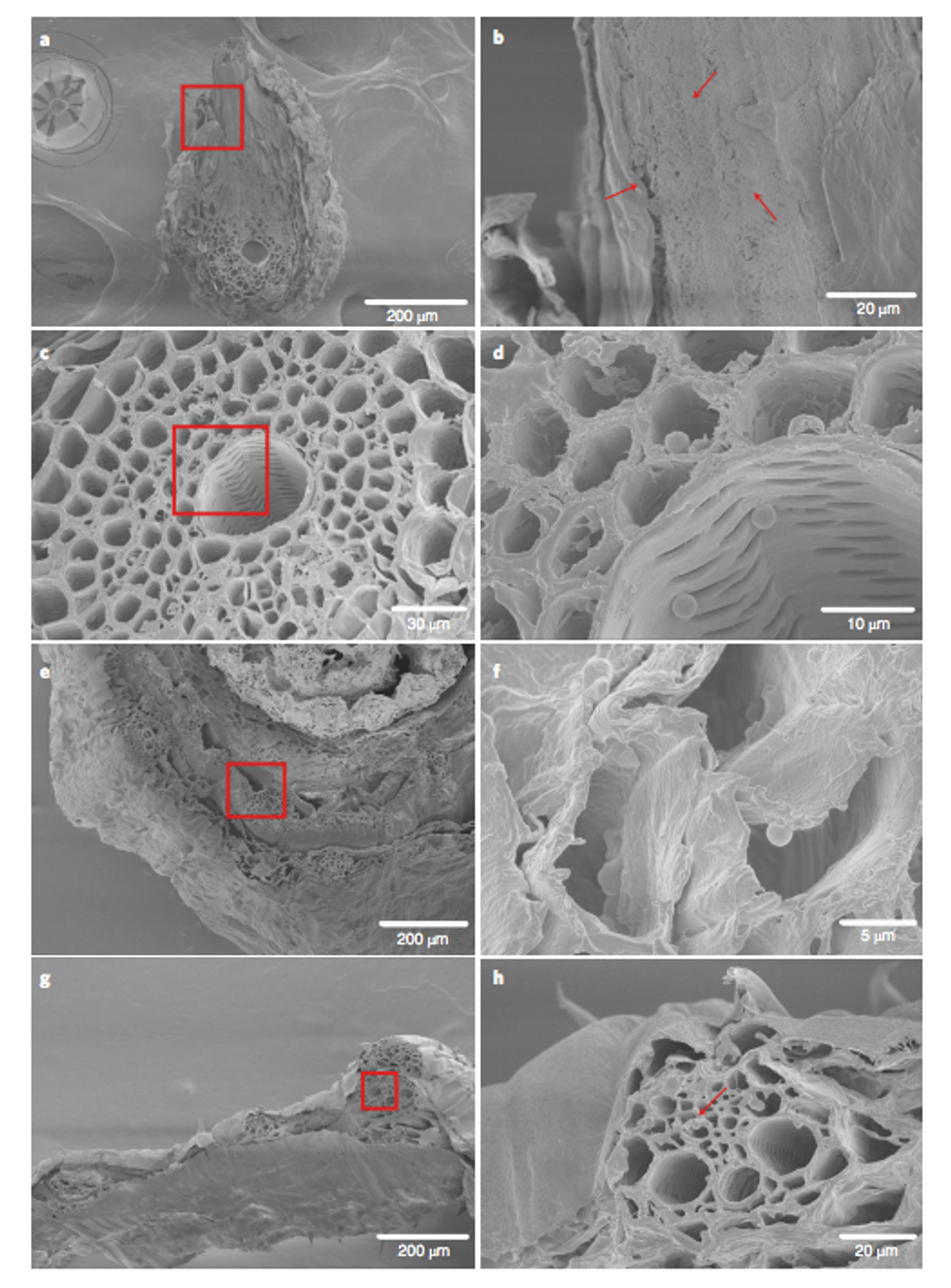
Images microbead localization in the root, stem and leaf of a wheat plant. (Credit: Effective uptake of submicrometre plastics bycrop plants via a crack-entry mode)
Passing through plant—and human—tissue
Earlier this year, Yongming Luo, a professor at the Yantai Institute of Coastal Zone Research and the Nanjing Institute of Soil Science in China, and colleagues reported microplastics accumulation in wheat and lettuce plants exposed to microplastics in a laboratory setting. The researchers grew the plants in hydroponic and soil systems with microplastics that had been laced with fluorescent dyes. The researchers analyzed cross sections of the plants under a microscope outfitted to detect the fluorescence. The roots, stems, and leaves lit up.
"For decades scientists have believed that plastic particles are too large to pass through the physical barriers of intact plant tissue. But our new study disproves this assumption," Luo told EHN.
Luo's team reported that the microplastics seemed to be entering the plants through cracks in the roots where lateral branching occurs as well as diffusing through cells at the developing root tips.
A team of scientists also reported earlier this year that they had detected microplastics in Italian supermarket produce including carrots, lettuce, broccoli, potatoes, apples, and pears. The researchers wrote that they found the most microplastics contamination in apples and the least in lettuce, and speculated that the perennial nature of a fruit tree allowed microplastics to accumulate more than in annual crops.
"If microplastics are getting into our vegetables, they are getting into everything that eats vegetables…which means they are in our meat and dairy as well," said Luo.
Microplastics have previously been detected in honey, beer, and seafood.
With clear and uncontrolled pathways into human food systems, ingestion of microplastics by humans is practically unavoidable, but the consequences of ingestion are as of yet unknown.
Plastic microfibers have been found in malignant lung tissue biopsies of cancer patients. These plastics were probably inhaled rather than swallowed, but the concern that microplastics can become lodged in tissue and cause dangerous inflammation remains. Studies of mammals forced to ingest microplastics in laboratories have also provided evidence that microplastics can pass through cell walls, move through the body, accumulate in organs, and impact the immune system.
Microplastics are chemically active materials, capable of attracting and binding to compounds known to harm human health. In addition to cadmium, microplastics have been shown to accumulate lead, PCBs, and pesticides. Further, plastics are manufactured with their own suite of toxic compounds, which can include BPA, an endocrine disruptor. Researchers have suggested that both acquired and endogenous compounds could leach out of degrading plastics into their environment, whether that be soil or human tissue.
"Because we are concerned that microplastics may harm our health…we find it interesting that the precautionary principle is not [being] applied," Sophie Vonk, a researcher at the Plastic Soup Foundation in the Netherlands, a group dedicated to ending plastic pollution, told EHN. "So as long as there's no proof, we just find it okay that we're being exposed to these particles every single day, by our food, water, the air we breathe."
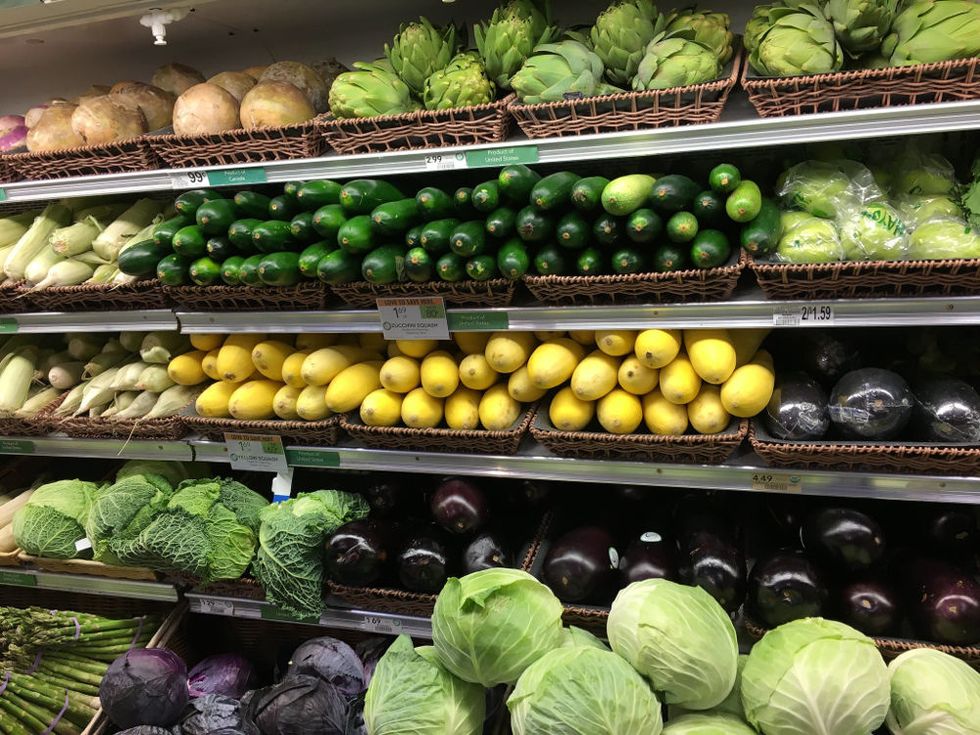
Scientists have detected microplastics in supermarket produce (Credit: loonyhiker/flickr)
How can we stop microplastics from entering soil?
Since microplastics enter agricultural systems through a variety of means, addressing this issue would require a multi-tiered approach.
The Plastic Soup Foundation has a long standing campaign to eliminate the use of plastic microbeads in personal care products. This would likely reduce the amount of plastic that ends up in sewage sludge. The group also supports limiting single-use plastics generally, as these will ultimately break down to microplastics that end up polluting both ocean and terrestrial environments. "We're not anti-plastic," said Vonk. "We feel like plastic can be very useful for certain purposes, but the way we're using it now is just really, really not clever."
The European Chemicals Agency has proposed an EU-wide ban on intentionally introduced microplastics, including those in personal care products as well as the slow-release fertilizers and seed coatings used in agriculture. Some states in the U.S. have also moved to ban microbeads from personal care products.
To address the plastic mulch issue, Nizzetto said that one helpful step would be to make companies that manufacture plastic mulch films responsible for their recycling and disposal. This would help reduce inappropriate disposal at farms.
The use of biodegradable plastics for mulch has also been proposed, but these polymers potentially come with their own set of problems. For instance, one of Huerta Lwanga's studies found that a biodegradable plastic negatively impacted wheat growth more than a conventional plastic used in the study. Also, there has been controversy over whether some "biodegradable" plastics actually degrade into harmless compounds, or whether they just break down into microplastics faster. Such controversy surrounds oxo-biodegradable plastics, which the EU moved to ban in 2019.
Another alternative to plastic mulch, developed by researchers at the Rodale Institute in Pennsylvania, involves growing nutrient-sequestering cover crops and then rolling them down to form a thick mat. Farmers then plant into the mat, which itself persists and inhibits weeds, lets water through, and adds nutrients instead of microplastics to the soil. According to the researchers' report, the technique can replace more than 90 pounds of plastic mulch per acre.
Gladis Zinati, director of the vegetable systems trial at Rodale and co-author on the report, told EHN that the strategy is scalable to large farms and emphasized the importance of building up healthy soils on farmlands to support long term resiliency.
Much more research is needed to paint a complete picture of the scope and impacts of microplastic pollution of agricultural soils. But in the meantime, the plastics will continue to accumulate.
"This is a kind of irreversible contamination," said Nizzetto. "There's no way to remediate this kind of contamination at the scale of agricultural soils."
Banner photo credit: Shutterstock
- Climate, justice, and the deep roots of regenerative farming - EHN ›
- Microplastics and pollution combine to become much more toxic: Study - EHN ›
- Microplastics and pollution combine to become much more toxic: Study - EHN ›
- Legacy chemicals are contaminating eggs around the world - EHN ›
- Car tire chemicals are killing salmon and steelhead - EHN ›
- Are microplastics invading the male reproductive system? - EHN ›
- Growing veggies in the city this year? You may want to check your soil - EHN ›
- Opinion: How toxic fertilizers create toxic municipal bonds - EHN ›
- I tried to sew a compostable stuffed animal for my friend’s newborn. It did not go well. - EHN ›
- I tried to sew a compostable stuffed animal for my friend’s newborn. It did not go well. - EHN ›
- Massive new database on how plastic chemicals harm our health - EHN ›
- 2024 could be a big year for PFAS bans: Report - EHN ›
- New study finds microplastics in all human placentas tested - EHN ›
- New study links microplastics to heart attack, stroke, and death - EHN ›
- Op-ed: Strengthening microplastic regulation to protect our kidneys - EHN ›

